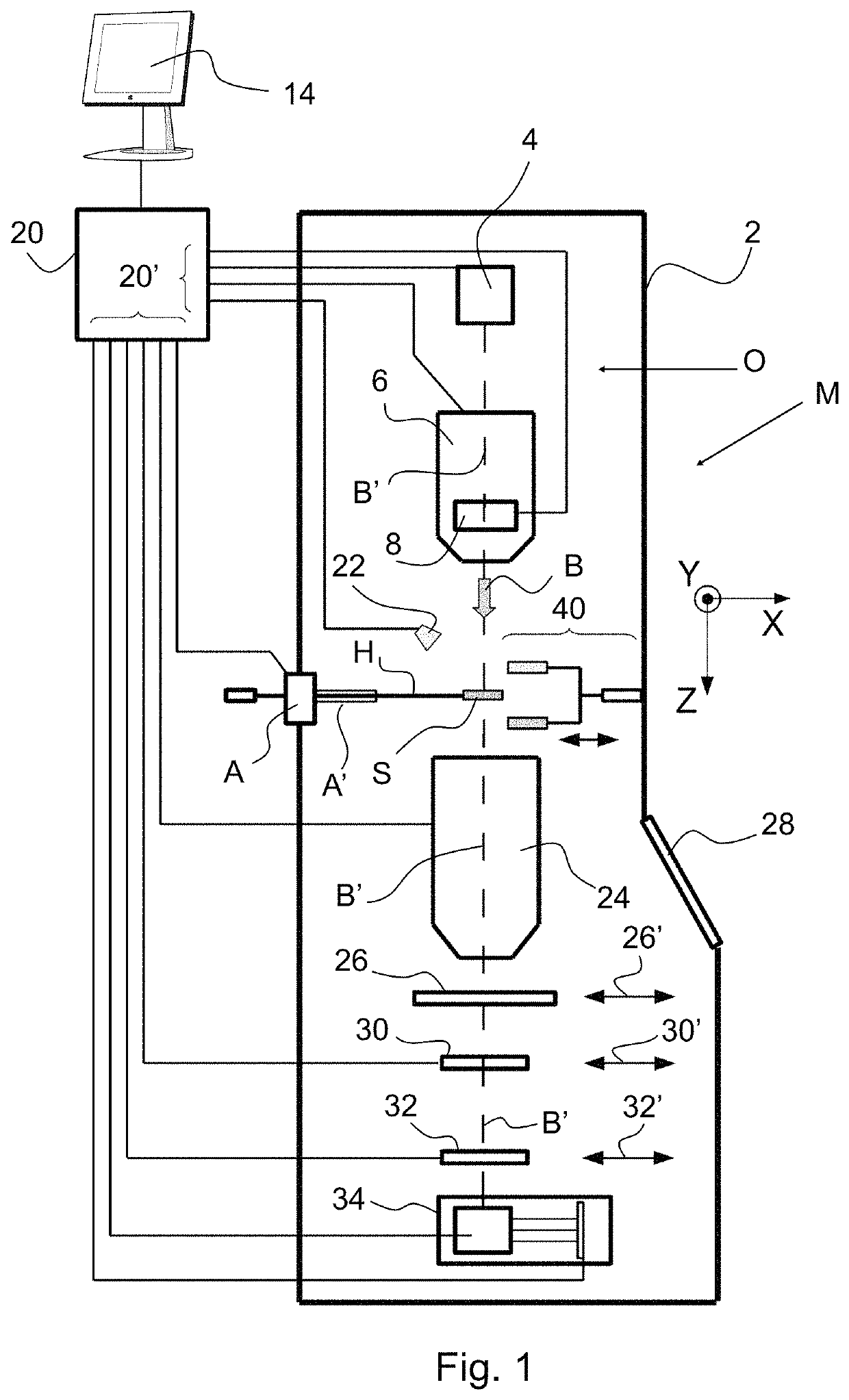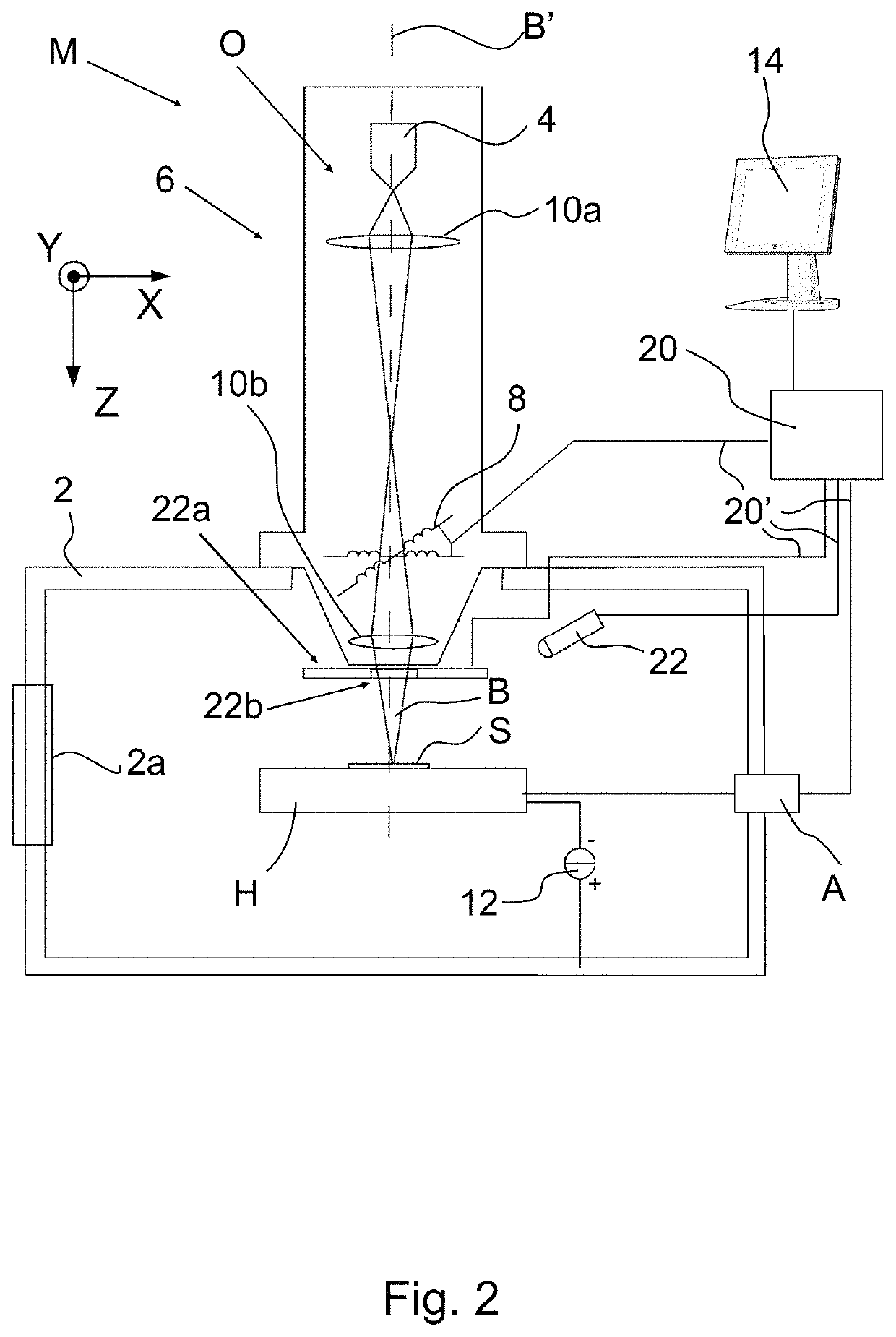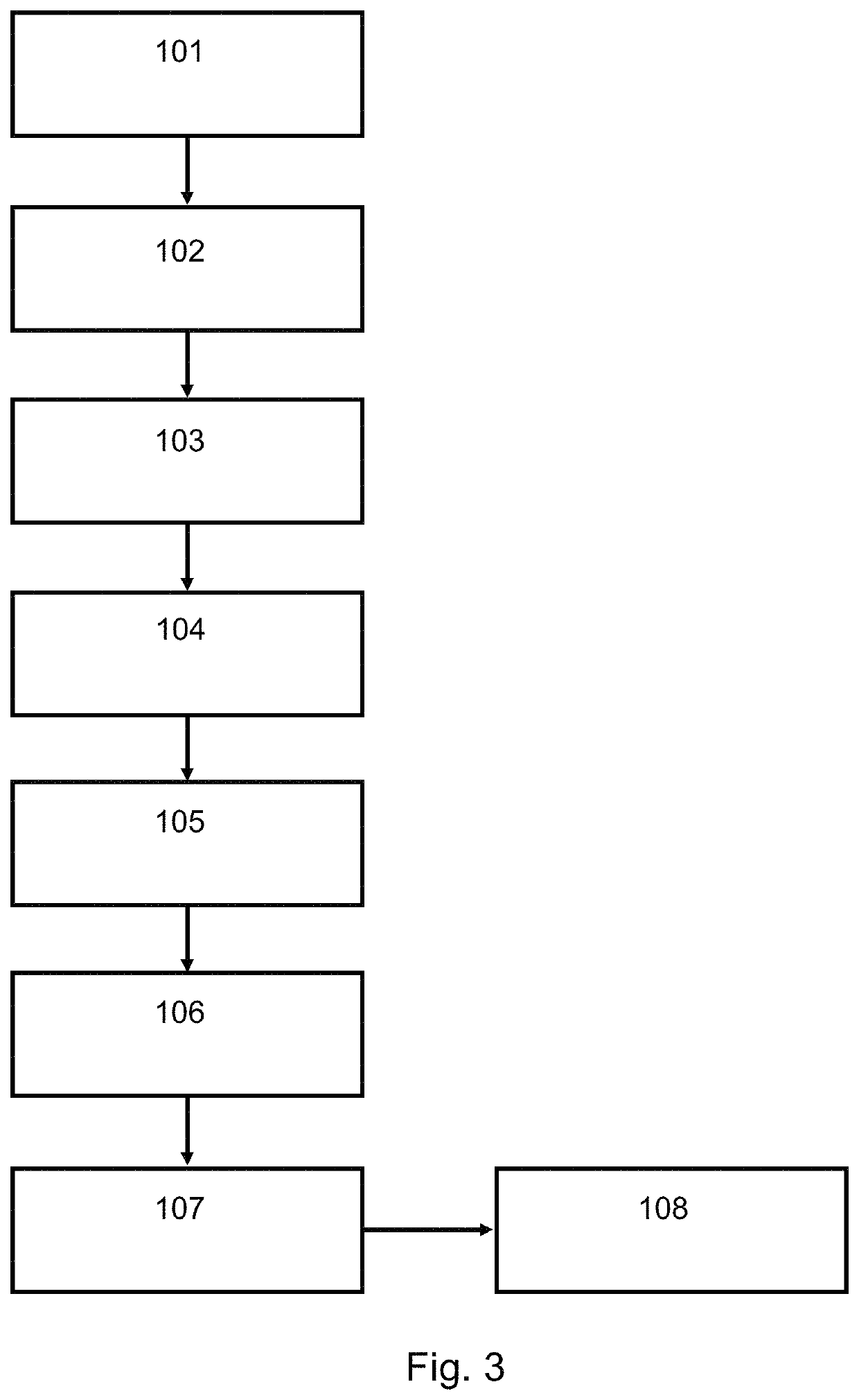Screening method and apparatus for detecting an object of interest
a technology of object detection and screening method, applied in the direction of material analysis using wave/particle radiation, instruments, image enhancement, etc., can solve the problems of difficult recognition of fibers, non-uniform surface structure of the pores of the filter, etc., to improve the detection efficiency, easy and efficient detection, and the effect of detecting the manipulated imag
- Summary
- Abstract
- Description
- Claims
- Application Information
AI Technical Summary
Benefits of technology
Problems solved by technology
Method used
Image
Examples
Embodiment Construction
[0038]FIG. 1 (not to scale) is a highly schematic depiction of a charged-particle microscope M, as an example of a possible embodiment of the apparatus that may be used to perform the method as disclosed herein. More specifically, it shows an embodiment of a transmission-type microscope M, which, in this case, is a TEM / STEM (though, in the context of the current invention, it could just as validly be a SEM—see FIG. 2—, or an ion-based microscope, for example). In FIG. 1, within a vacuum enclosure 2, an electron source 4 produces a beam B of electrons that propagates along an electron-optical axis B′ and traverses an electron-optical illuminator 6, serving to direct / focus the electrons onto a chosen part of a specimen S (which may, for example, be—locally—thinned / planarized). Also depicted is a deflector 8, which (inter alia) can be used to effect scanning motion of the beam B.
[0039]The specimen S is held on a specimen holder H that can be positioned in multiple degrees of freedom by...
PUM
 Login to View More
Login to View More Abstract
Description
Claims
Application Information
 Login to View More
Login to View More - R&D
- Intellectual Property
- Life Sciences
- Materials
- Tech Scout
- Unparalleled Data Quality
- Higher Quality Content
- 60% Fewer Hallucinations
Browse by: Latest US Patents, China's latest patents, Technical Efficacy Thesaurus, Application Domain, Technology Topic, Popular Technical Reports.
© 2025 PatSnap. All rights reserved.Legal|Privacy policy|Modern Slavery Act Transparency Statement|Sitemap|About US| Contact US: help@patsnap.com



